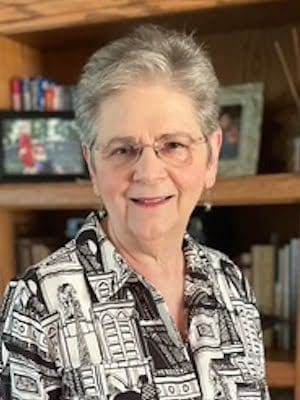
I was awakened at 4 a.m. Christmas morning, not by “visions of sugar plums” but by the words of Dana Shapiro.
“Moments that announce themselves as your subject are rare and there’s magic to them. Ignore them at your own peril,” she wrote in her 2020 book Still Writing.
Joan Didion called it “a shimmer around the edges,” whereas Emerson, in his well-known essay “Self-Reliance,” called it “a gleam,” stating that “a man should learn to detect and watch that gleam of light which flashes across his mind from within.”
The “gleam” or “shimmer around the edges” flashed days ago as I caught a bit of StarDate on the radio. The subject was the winter solstice and the history of celebrations surrounding it.
The winter solstice is the day of the year with the shortest period of daylight and the longest night, after which days lengthen and nights becomes shorter.
Traditionally, the winter solstice was considered the official beginning of winter, celebrating the changing of seasons and Earth’s rebirth. It was believed to bring powerful energy to regeneration, renewal and self-reflection.
Winter solstice observances possibly began as early as 10,200 BC, and Julius Caesar changed the Roman calendar in 46 BC by placing the new year shortly after the winter solstice.
For centuries, social and religious cultures have celebrated on or around the winter solstice.
Diwali is a five-day festival of lights observed by Hindus, Sikhs, and Jains celebrating new beginnings and the triumph of good over evil.
With Hanukkah, the Jewish community participates in an eight-day festival of lights, commemorating the reclaiming and rededication of the Second Temple in Jerusalem.
Kwanzaa is a seven-day African American celebration focusing on community, family and culture. The seven candles of the kinara symbolize the Kwanzaa principals – unity, self-determination, collective work and responsibility, cooperative economics, purpose, creativity and faith.
Scandinavians and Italians typically observe St. Lucia Day, a festival of lights and a Christian feast day in honor of Lucia of Syracuse who, according to legend, brought aid to the early Christians hiding in the Roman catacombs. St. Lucia wore a candlelit wreath on her head to light her way.
Christmas is celebrated by Christians as a religious observance of Christ’s birth and by many non-Christians as a secular family holiday. One need only look to the twinkling lights on the Christmas tree, or the multitude of lights adorning home facades, businesses and drive-thru venues, as evidence of a festival of lights. The Christian celebration is grounded in light and the coming of Christ as “the light of the world” (John 8:12).
In considering these winter celebrations (and there are others), I note at least two common themes: the prevalence of light dispelling the darkness, and the focus on new beginnings through numerous avenues such as reclamation, regeneration, renewal, re-birth, self-reflection, self-determination and faith.
It appears humanity has known the value of light since the dawn of time, whether that light is literal or figurative. I wonder if seeing “the light” – as regards oneself, one’s neighbor, one’s society and culture – is a prerequisite for new beginnings?
Regardless of variances in our cultural and spiritual practices and beliefs, are our winter celebrations prime opportunities to consider a move out of the darkness and into the light? Out of the old into the new?
Even as Christ proclaimed, “I am the light of the world” (John 8:12), he also told his disciples and a rather large crowd of bystanders, “You are the world’s light” (Matthew 5:14).
Referencing new beginnings, I recall Isaiah 43:19 where God says, “For I am going to do a brand-new thing. See, I have already begun! Don’t you see it!” (The Living Bible).
As the daylight slowly increases and a new year fast approaches, may we seek to be a light to the world, dispelling darkness and lighting the way so that all may see, know and participate in this brand-new thing that God is doing.
Turn on your Heartlight and Be a Light!
Retired after 38 years in education and counseling, the last nine of those as school counselor serving a campus of 650+ third, fourth and fifth graders. When not traveling, she fills her days with community, charitable and civic work, along with occasionally writing for The Tyler Loop and blogging at Pilgrim Seeker Heretic, affirming the sacredness of life and the sacrament of relationships.

